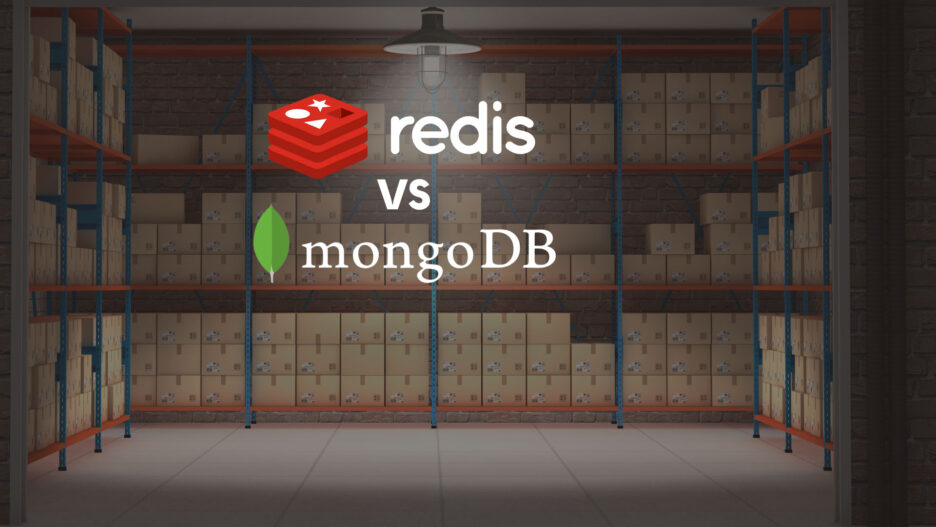Redis and MongoDB have become the most popular solutions to store data. Their appeal lies in the fact that users are provided with a simple structure that delivers superior performance.
These two solutions are the best fit for scenarios where relational databases don’t work well in terms of scalability or the simplicity of data representation.
MongoDB is a document-oriented information storage solution that supports the installation of servers or clouds. In MongoDB, a document is represented in the form of a JSON file, which is an easy and effective method for numerous applications.
On the other hand, Redis is a key-value storage solution for information that is located on the user’s server, high-performance cluster, or cloud.
Both MongoDB and Redis work exceptionally well with Python, Java, JavaScript, and other programming languages and frameworks. Just like with simple “get” and “set” actions for specific data, these solutions take the same amount of time to create rather complex requests for the database to build an effective data processing scenario.
MongoDB: The document-oriented database
As previously stated, MongoDB is a document-oriented database by excellence. It has many benefits, but it doesn’t come without its drawbacks. Simultaneously, MongoDB satisfies very complex criteria to manage large arrays of information and it manipulates significantly fast data processing.
MongoDB stores and processes data in binary form and has a user-friendly representation of documents in JSON format for input and output of data. Additionally, the MongoDB command line interface is simple, easy to use, and user-friendly.
MongoDB data types are standard and resemble fairly closely those of Java, C, C++, or any other programming language with strict types. Users see these data types represented as strings in JSON files, while a matter is represented on the level of BSON, which is the internal binary equivalent of JSON.
MongoDB works with binary representation where each BSON type has an integer and string identifiers to each type of value. The maximum BSON document size is of 16 megabytes.
For more information about documents in MongoDB, models, JOIN, and more, please visit this blog. Additionally, we highly recommend this blog to review information about MongoDB schemes.
Cloud and container solutions for MongoDB
MongoDB greatly benefits from using the MongoDB docker container, which helps to launch and support databases for information system projects. In addition to this, users can rent ready-to-use MongoDB hosting for almost the same amount of money as a bare instance in the cloud.
For a MongoDB cloud solution, mLab is a suitable option to consider. In order to connect to MongoDB with mLab, users should simply set a variable to the given cloud database and begin working immediately.
The mLAB cloud solution can use up to three variants of a cloud as the back-end to store data: AWS, Azure, and Google. To select a cloud provider, users must simply click on mLab’s admin panel and choose an option.
Additionally, you can use MongoDB Atlas for AWS to launch MongoDB and operate it in the Amazon cloud.
Redis: The key-value remote dictionary server
Redis is a remote dictionary server that implements the concept of key-value data storage. It is a formidable example of a NoSQL database with open source code. Redis provides a high-performance reading and saving of information by storing data in memory and offering a snapshot of the permanent system such as HDD and SSD, as well as a time to time mechanism to save data in the virtual memory for persistent storage.
In addition to these remarkable features, Redis also offers a message transport system that replicates on several computers within a cluster, while supporting a dozen programming languages and working in numerous operating systems.
Redis supports data type values that can be associated with a key. These data types help manage information as strings, lists, sets, sorted sets, hash tables, hyper logs, streams, and geospatial data.
Cloud and container solutions for Redis
Redis cloud solutions are widely popular and are readily available in both main cloud systems and in specialized cloud systems, such as Redislabs. These types of cloud systems can be set up with a very easy and straightforward setup procedure of a few, simple clicks in the cloud admin panel.
Linux and MacOS are the recommended solutions to use in a virtual environment and as cloud systems for Redis databases - both solutions provide great Redis benchmark values.
Another great capability is the “Redis Docker Compose” feature that creates docker containers for the database. It is very helpful with DevOps as it increases the system’s maintainability. The “Docker Hub Redis” uses an image for containers. It simplifies the work with a Redis container if the project requires a quick deployment of the database storage.
An alternative to Redis is the Memcached tool, which is a general-purpose distributed memory caching system. A comparison of Memcached vs Redis shows they have similar performance levels, but it seems as though Memcached is a more lightweight solution that is likely to lose all data if the system is restarted. This is not a critical issue if users employ it as the cache.
The beauty of such an approach in a modern cloud environment lies in the fact that containers are the key to keep a system well-organized and easy to support from a DevOps standpoint. Instead of maintaining each system component in one general environment, it is possible to use isolated containers and save resources in comparison to full virtualization. This works well for both Redis and MongoDB - you can simply type: Docker MongoDB or Docker Redis, in a search string.
Another great approach is using the provided solution in the cloud system level, such as AWS Redis. Amazon Cloud offers Amazon ElastiCache, which is a ready-to-use environment that supports both Redis and Memcached.
Conclusion
Now that you are more familiar with both MongoDB and Redis, you can consider these two excellent tools for your data storage needs in an informed way. While Redis and MongoDB should not be directly compared, since they are as different as apples and oranges, they are both effective.
There’s more research available in terms of speed and performance, which you can find here.
In essence, it is better to use Redis for high performance on large databases for its key-value data representation. If you prefer to keep your data in JSON document form and have reliable performance, choose MongoDB. Each solution is designed to work better than relational databases if their unique features are leveraged effectively.





![[Blog cover] SEO optimization best practices](https://svitla.com/wp-content/uploads/2025/05/Blog-cover-SEO-optimization-best-practices-560x310.jpg)